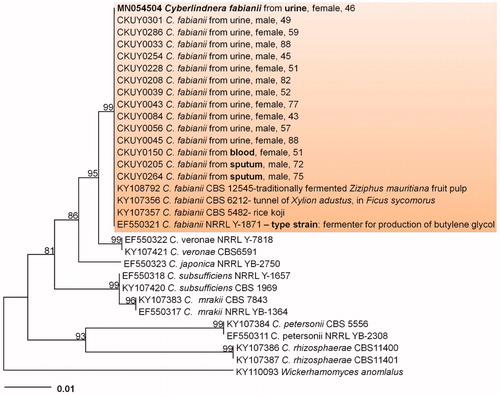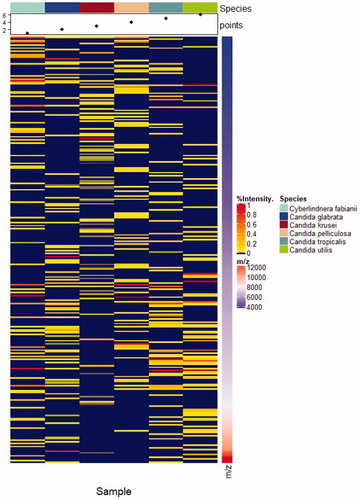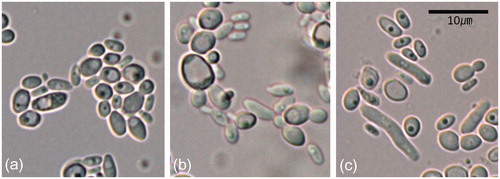Figures & data
Table 1. Medical history of the patients for the isolates used in this study.
Figure 2. Phylogenetic tree inferred from neighbor-joining analysis of the he D1/D2 region of the large subunit (LSU) sequences from Cyberlindnera fabianii species. The nodal significance was evaluated by means of bootstrapping performed using 1000 replicates.

Table 2 Antifungal susceptibility testing of Cyberlindnera fabianii (n = 11) using Sensititre YeastOneTM YO10.
Figure 3. The comparison of MALDI-TOF profiles of Candida and its related species. The species used in the comparison were Cy. fabianii, C. glabrata, C. krusei, C. pelliculosa, C. tropicalis and C. utilis and MALDI-TOF profiles of each species were presented from left to right. MALDI-TOF profiles mainly between m/z 4000 and 12000 were compared. MicoIDSys MALDI-TOF system was used for this comparison.



